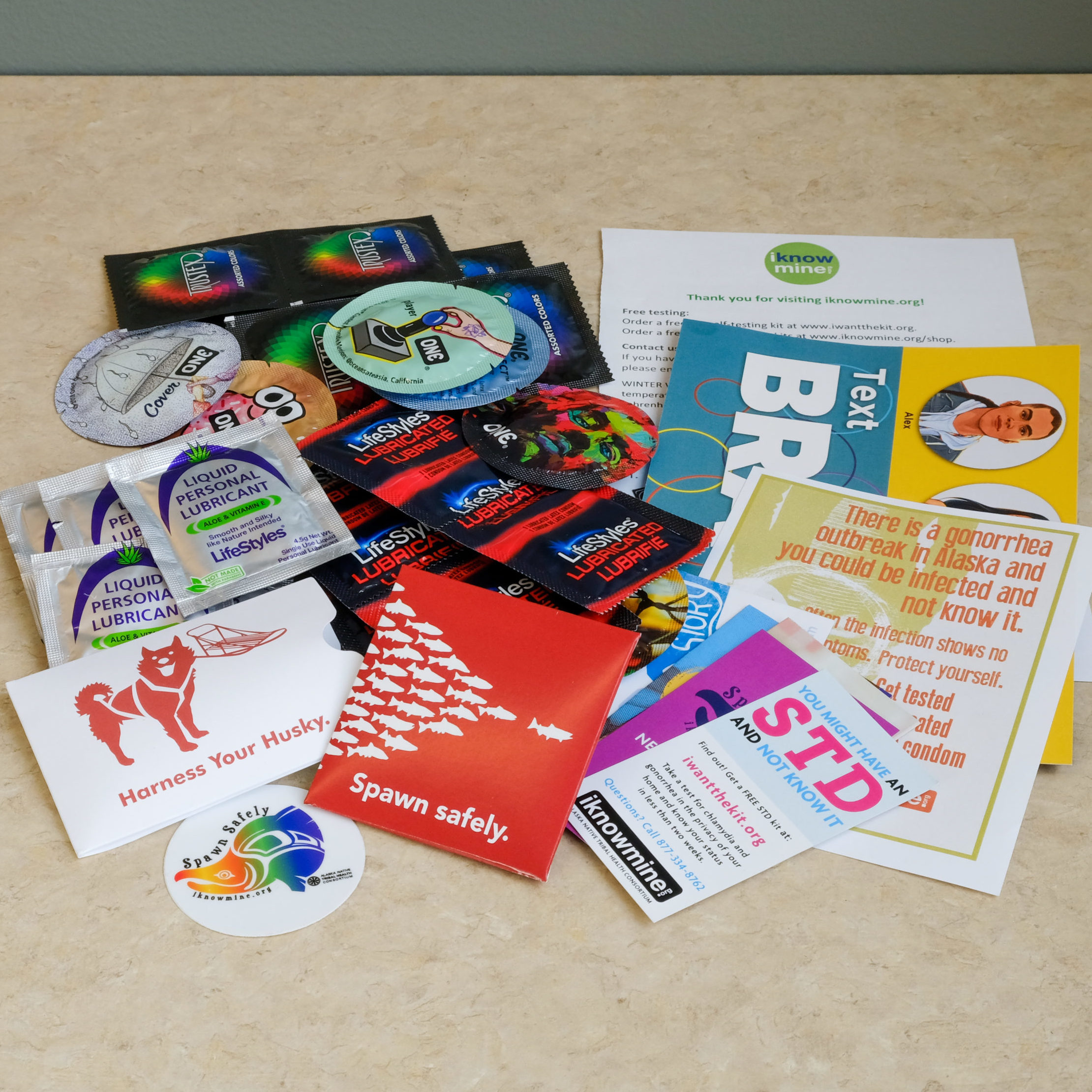“Accept What Life Brings: You Cannot Control Many Things”
– Traditional Alaska Native Value[6]
!! Public Service Announcement !!
Alaska is experiencing an increase in syphilis cases. If you or your partners have had any symptoms of syphilis, it is important to get tested. If you have syphilis, it can be cured with the right antibiotics from your health care provider, but you can get syphilis again, even after completing treatment. Using condoms and getting tested can help reduce your risk and the spread of syphilis.
Last updated April 2021
What is syphilis?
Syphilis is a sexually transmitted infection (STI) caused by a bacteria called Treponema pallidum. If syphilis is left untreated it can result in serious health problems affecting the brain, nerves, eyes, heart, blood vessels, liver, bones and joints[4].
There are four stages of syphilis, each having their own signs and symptoms:
How is syphilis spread?
Syphilis is spread when a person comes into direct contact with a syphilis sore, also called ‘chancre,’ during vaginal, anal or oral sex. A mother who is infected may also pass syphilis on to their baby during pregnancy or childbirth. On average, the first symptoms of syphilis begin 21 days after infection, but can range from 10 to 90 days[3]. Syphilis is easy to spread to other people when there are sores. Using a latex condom correctly every time can help to prevent the spread of syphilis. Using safer sex tools, such as condoms or dental dams, prevent transmission by preventing person-to-person contact with a sore. If the sore is in an area not covered by a condom, syphilis can still be transmitted.
How is syphilis treated?
Syphilis can be cured with antibiotics from a health care provider. While syphilis is curable, receiving treatment might not undo any damage already caused by the infection. It is important that persons infected with syphilis complete the treatment prescribed by a health care provider.
What happens if syphilis is left untreated?
A syphilis infection that is left untreated may cause severe medical complications, including death. Examples of severe diseases resultant from syphilis infection include:
Who is at risk for syphilis?
All sexually active individuals are at risk of acquiring syphilis through unprotected vaginal, anal or oral sex. It is important to have an open conversation about risk of syphilis infection with a health care provider.
Consider getting tested for syphilis, and testing regularly, if you are sexually active and[1]:
- are a man who has sex with men (MSM)
- are living with HIV
- have partner(s) who have tested positive for syphilis
How to reduce the risk of syphilis infection?
The only way to avoid getting STIs, like syphilis, is to not have vaginal, anal or oral sex. If a person is sexually active, they can lower their chances of acquiring syphilis by:
- Being in a mutually monogamous relationship with a partner who has been tested for and does not have syphilis.
- Using latex condoms correctly and every time during sexual activities can help prevent the transmission of syphilis. This may help by preventing direct person-to-person contact with a syphilis sore. If there is a sore in an area that is not covered by a condom, the sores can still transmit syphilis from person-to-person.
- Getting tested regularly if you are at-risk or are concerned about exposure to syphilis.
- Seek prompt treatment if there are symptoms present, or a recent diagnosis of syphilis has been determined.
- Having a conversation with your partner(s) about safe practices before engaging in sexual activities, and helping to get all sexual partners tested and treated, can help prevent the spread of syphilis.
What does syphilis look like in Alaska?
Since 2018, Alaska has been experiencing a syphilis outbreak. Between 2018 and 2019 the cases of syphilis more than doubled and included cases in the primary, secondary and early latent stages[5]. The increase in cases were in heterosexual men and women. The increase of syphilis in women highlights the concern for congenital syphilis and the importance of STI screening for those who are at-risk during pregnancy at the initial prenatal visit, during the third trimester, and at the time of delivery.
Where can I go for testing or treatment?
Find a local testing location with the CDC clinic locator :
- The Alaska Native Medical Center’s Walk-in Clinic is available 365 days a year for patients of all ages for non-emergent health services, including STI testing.
- If in the Anchorage area, the Anchorage Health Department offers STI testing and counseling. The Anchorage Public Health Clinic can also provide treatment (antibiotics) for STIs, including syphilis.
- If outside of Anchorage or other urban area, you can find a clinic by region to help locate the nearest STI testing location, or with the CDC clinic locator above.
ORDER A FREE STI SELF-TEST KIT
Sexually transmitted infection (STI) self-test kits are available for free to any mailing address in Alaska. Tests are shipped directly and discreetly to you via iwantthekit.org. It’s the comfort of knowing, regardless of your access to a health care facility.



